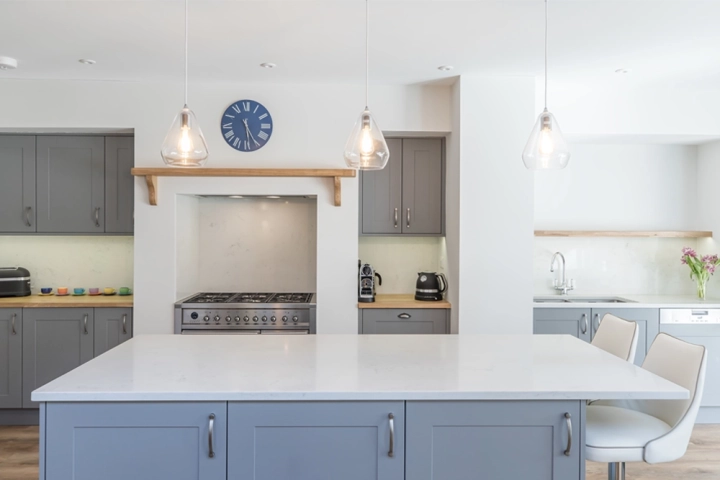
Top Tips For Designing Your Kitchen
We spend more money on our kitchen than any other room in the house. It has more functions than any other room and these days when money is often tight and less people are moving house it's important to get it right. Kitchens need to be sustainable, durable and be able to suite your needs now but also in the years to come when your lifestyles and therefore requirements may change. Here are my top tips when considering a new kitchen:
1) Note down what you like and dislike about your current kitchen
Most people are rightly excited at the thoughts of purchasing a new kitchen and their focus is far more on the look, materials and colour scheme of their new kitchen than its functionality. So my advice is before you do anything else keep a notepad in your kitchen for a couple of weeks and note down anything you like, dislike or would like to change about your kitchen. It sounds an obvious thing to do, but these notes will form the basis of your kitchen plan and if you don’t make notes, those little annoyances can be forgotten when you meet with a kitchen retailer and faced with making the more aesthetic and fun decisions, only for them to re-surface once its too late!
2) Consider your kitchen’s long term usage
For example do you have a young family that will be growing up? Are you going to require more storage space? Do you have a breakfast bar but no table? If you are raising a family in a few years time you might like a family eating area. Or are you looking for a kitchen to see you into your senior years? If so the positioning of drawers, and appliances are key, together with ease of cleaning.
3) Measure every single part of the kitchen yourself then check it!
The retailer will rely on these measurements and it won’t be until much further down the line that most actually check measurements. This needs to include windows, doors, alcoves, position of sinks, oven, hob, stop cock, boiler etc. and all electrical sockets you currently have. Planning properly now will save you later on.
4) Work out your budget and note down any areas you can be flexible on
There are key areas where you can save on without sacrificing the overall look of your kitchen:Unnecessary electrical or plumbing work – if you don’t need to relocate hobs, or sinks in order to drastically improve either the overall look or function of the kitchen then avoid doing so as it can be extremely costly. Cushion close doors and drawers are fabulous but very expensive. You can get almost the same effect from purchasing door dampeners and these are a fraction of the cost. Built-in wire larders, bins or gadgets. Some of these are useful but a normal shelved larder unit can work just as well and be more solid and easier to clean, with less likely to go wrong with it, and a large cupboard can house bigger bins effectively. Here are the areas I recommend you spend on:
- Where possible don’t just buy door and drawer fronts get complete units – far better to spend more at once than have doors and drawers misaligned because the MDF carcass has seen better days
- Built in appliances – free standing appliances fill up essential work top space and can completely ruin the overall look of your kitchen, as the eye is always drawn to a break in uniformity. Also, it would be a great shame to not spend on a built in appliance because you have an existing stand alone one only to find it breaks down not long after you’ve had the rest of your kitchen fitted
5) Beware of magazine or showroom kitchens
DON’T look in too many magazines or showrooms as these kitchens are often shot with wide angle lenses, and in isolated surroundings. I.e. they look great in a large space but are entirely impractical when it comes to a real, workable kitchen space and the rest of your home! Make sure you plan a kitchen for the space in your home.
6) Avoid 'Fashion' Kitchens
If you want longevity then go for an overall classic look for your kitchen as it will not date so quickly, and avoid ‘fashion’ kitchens that may look great now but in two years time will that bright pink or stencilled unit really annoy you? Monochrome is good or simple, neutral colours. My advice would be to give your kitchen a contemporary feel and add any bright colours through your accessories and lighting. This way it is simple and cost effective to update your kitchen at any given time.
7) Don’t be afraid to mix old with new
Architects and designers are increasingly concerned with sustainability and using old and existing materials together new and modern ones. If you have a beautiful old welsh dresser, make it into a feature!
8) Be very wary of additional charges
Many high street kitchen retailers have additional charges, particularly regarding installation costs. It is a high profit area for them. Also is the onus on you to arrange delivery times, and check the products once delivered? Make sure you have a clear understanding of what they expect you to do if something goes wrong!
